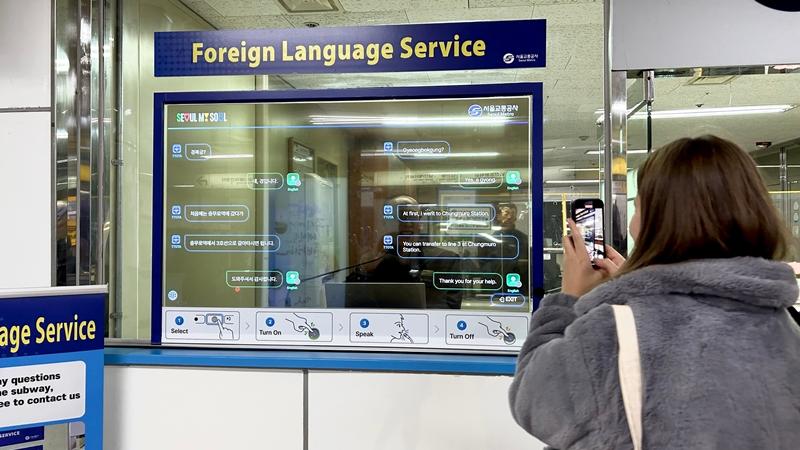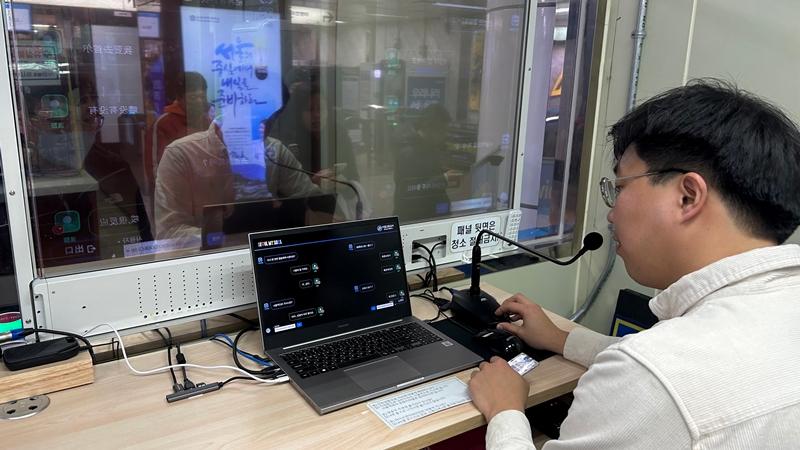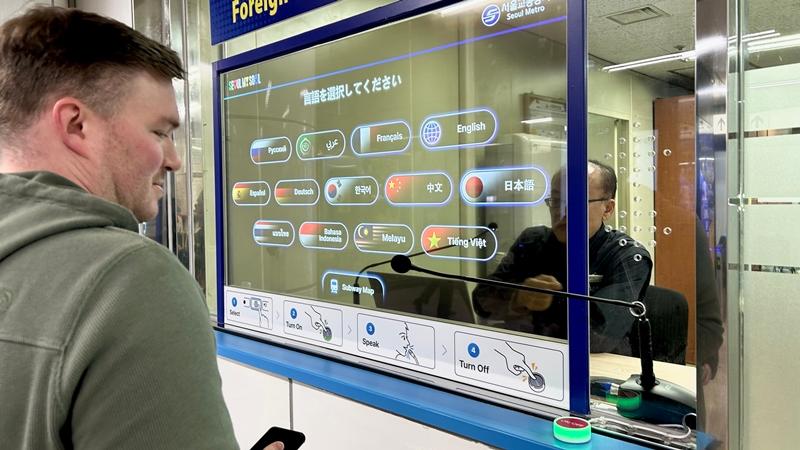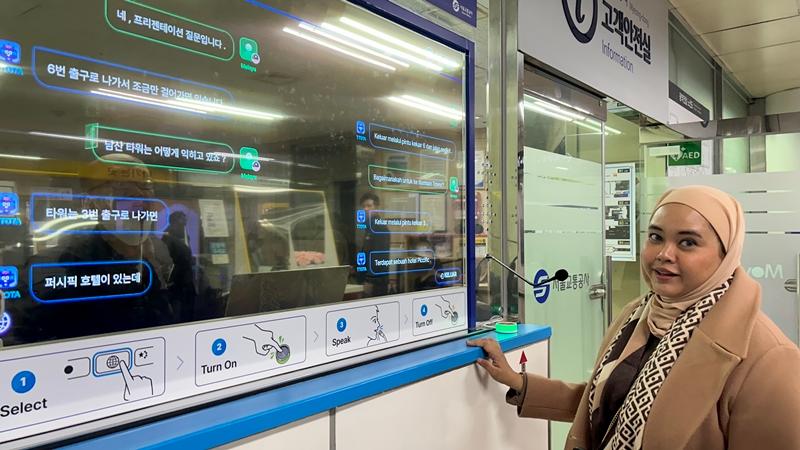View this article in another language
- 한국어
- English
- 日本語
- 中文
- العربية
- Español
- Français
- Deutsch
- Pусский
- Tiếng Việt
- Indonesian

Turkish tourist Kardelen Kose on Dec. 12 takes a photo of the AI Live-Translation System at Myeongdong Station in Seoul.
By Choi Jin-woo
Photos = Choi Jin-woo
Kardelen Kose, a tourist from Turkiye (Turkey), on the afternoon of Dec. 12 said this after seeing the AI (Artificial Intelligence) Live-Translation System for the first time at Myeongdong Station on Seoul's No. 4 subway line. Seoul Metro on Dec. 4 launched pilot operations of the real-time interpretation system, which is based on an AI system of foreign language interpretation to offer smooth communication between foreign nationals and subway staff.
The 13 languages offered by the system are Arabic, Chinese, German, English, Spanish, French, Indonesian, Japanese, Korean, Malay, Russian, Thai and Vietnamese.

A subway worker on Dec. 12 talks with a foreign tourist using the AI Live-Translation System at Myeongdong Station in Seoul.
A few seconds later, an English-to-Korean translated sentence appeared on the 55-inch transparent screen. The subway worker pointed toward a desired direction and said, "Go to your right."
After finishing his sentence, a Korean-to-English translated sentence also appeared. Unlike commercial translation apps like Naver's Papago or Google Translate, the AI-based system helps communication with the subway worker more intuitively in an in-person conversation with eye contact and gestures.
"An average of 20-30 visitors visit the AI Live-Translation System daily," Myeongdong Station manager Choi Hyeong-chae said. "Those who mainly use it aren't just tourists from English-speaking countries but also those from Japan and China."

Tourist Eric Medema from the U.S. state of Michigan on Dec. 12 uses the AI Live-Translation System at Myeongdong Station in Seoul.
Medema called using the system far more convenient than a Seoul subway map.
Choi said the greatest advantage of the system is its "ability to allow users to quickly obtain the information they need through conversations with station staff without language barriers." He added that service in Korean is for hearing impaired Koreans who face difficulties in communication.

Tourist Nina Amila from Kuala Lumpur, Malaysia, on Dec. 12 uses the AI Live-Translation System at Myeongdong Station in Seoul.
"From February, the service will be expanded to 10 stations including those of Seoul, Hongik University, Gwanghwamun and Itaewon to give more information to foreign nationals," a Seoul Metro source said. "For the recognition of proper nouns like station names, upgrades will come through AI-based data collection and storage."
paramt@korea.kr
Most popular
- Grammy-winning producer calls Suga of BTS 'amazing artist'
- 'Universal love, family' themes fuel success of 'King of Kings': director
- Council sets minimum hourly wage in 2026 at KRW 10,320
- Expansion of foreign app system raises tourist convenience
- Nat'l population diversity rose nearly 8% from 2018-22: study
